
Montague Rhodes James was an English author, medievalist scholar and provost of King's College, Cambridge (1905–1918), and of Eton College (1918–1936). He was Vice-Chancellor of the University of Cambridge (1913–1915).

An antiquarian or antiquary is an aficionado or student of antiquities or things of the past. More specifically, the term is used for those who study history with particular attention to ancient artifacts, archaeological and historic sites, or historic archives and manuscripts. The essence of antiquarianism is a focus on the empirical evidence of the past, and is perhaps best encapsulated in the motto adopted by the 18th-century antiquary Sir Richard Colt Hoare, "We speak from facts, not theory."
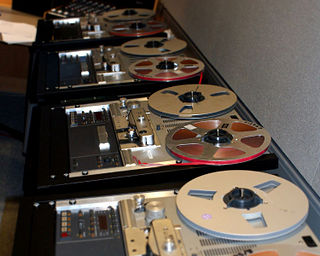
The British Library Sound Archive, formerly the British Institute of Recorded Sound; also known as the National Sound Archive (NSA), in London, England is among the largest collections of recorded sound in the world, including music, spoken word and ambient recordings. It holds more than six million recordings, including over a million discs and 200,000 tapes. These include commercial record releases, radio broadcasts, and privately made recordings.
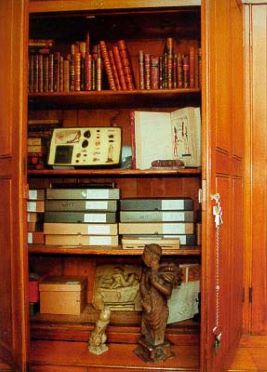
The Secretum was a British Museum collection of the nineteenth and early twentieth centuries that held artefacts and images deemed sexually graphic. Many of the items were amulets, charms and votive offerings, often from pre-Christian traditions, including the worship of Priapus, a Greco-Roman god of fertility and male genitalia. Items from other cultures covered wide ranges of human history, including ancient Egypt, the classical era Greco-Roman world, the ancient Near East, medieval England, Japan and India.

Richard Newton was an English caricaturist, miniaturist and book illustrator.

George Murgatroyd Woodward (1765–1809), more commonly known as George 'Moutard' ("Mustard") Woodward, was an English caricaturist and humor writer. He was a friend and drinking companion of Thomas Rowlandson.
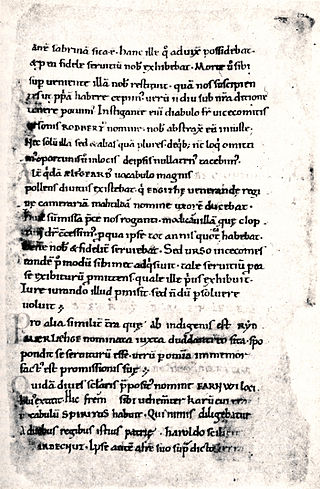
Hemming's Cartulary is a manuscript cartulary, or collection of charters and other land records, collected by a monk named Hemming around the time of the Norman Conquest of England. The manuscript comprises two separate cartularies that were made at different times and later bound together; it is in the British Library as MS Cotton Tiberius A xiii. The first was composed at the end of the 10th or beginning of the 11th century. The second section was compiled by Hemming and was written around the end of the 11th or the beginning of the 12th century. The first section, traditionally titled the Liber Wigorniensis, is a collection of Anglo-Saxon charters and other land records, most of which are organized geographically. The second section, Hemming's Cartulary proper, combines charters and other land records with a narrative of deprivation of property owned by the church of Worcester.
Nalini Balbir is a French Indologist who lives in Paris. She is a scholar of Sanskrit, Prakrit, Pali, Jainism, Buddhism and Hinduism. She was previously a student of Indologist Colette Caillat. She is known for her work on the publication of the Catalogue of the Jain Manuscripts of the British Library published by the Institute of Jainology.
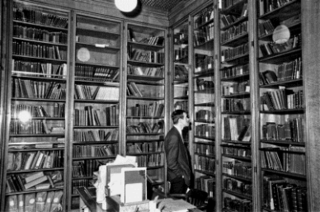
The Private Case is a collection of erotica and pornography held initially by the British Museum and then, from 1973, by the British Library. The collection began between 1836 and 1870 and grew from the receipt of books from legal deposit, from the acquisition of bequests and, in some cases, from requests made to the police following their seizures of obscene material.
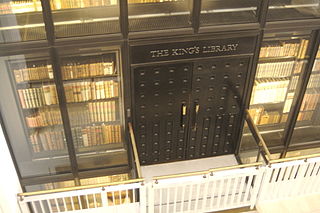
The King's Library was one of the most important collections of books and pamphlets of the Age of Enlightenment. Assembled by George III (r.1760–1820), this scholarly library of over 65,000 volumes was subsequently given to the British nation by his son, George IV. It was housed in a specially built gallery in the British Museum from 1827 to 1997 and now forms part of the British Library. The term "King's Library" was until recently also used to refer to the gallery in the British Museum built for the collection, which is now called the "Enlightenment Gallery" and displays a wide range of objects relating to the Enlightenment.
Janet Moira Backhouse was an English manuscripts curator at the British Museum, and a leading authority in the field of illuminated manuscripts.
George Weare Braikenridge (1775–1856) was an English antiquarian. He was born in the Colony of Virginia, but lived for most of his life in Bristol, England, where he created a large collection of Bristolian historical and topographical material known as the Braikenridge Collection. It contains over 1400 drawings and watercolours of Bristol landscapes and buildings. These are held in Bristol City Museum and Art Gallery, with related collections of manuscripts and other items held by Bristol Central Library and Bristol Archives. The Braikenridge Collection has become the most important historical record of Bristol's appearance in the early 19th century, and makes Bristol one of the best documented English cities in this respect.

The British Library Philatelic Collections is the national philatelic collection of the United Kingdom with over 8 million items from around the world. It was established in 1891 as part of the British Museum Library, later to become the British Library, with the collection of Thomas Tapling. In addition to bequests and continuing donations, the library received consistent deposits by the Crown Agency and has become a primary research collection for British Empire and international history. The collections contain a wide range of artefacts in addition to postage stamps, from newspaper stamps to a press used to print the first British postage stamps.

The International Dunhuang Project (IDP) is an international collaborative effort to conserve, catalogue and digitise manuscripts, printed texts, paintings, textiles and artefacts from the Mogao caves at the Western Chinese city of Dunhuang and various other archaeological sites at the eastern end of the Silk Road. The project was established by the British Library in 1994, and now includes twenty-two institutions in twelve countries. As of 18 February 2021 the online IDP database comprised 143,290 catalogue entries and 538,821 images. Most of the manuscripts in the IDP database are texts written in Chinese, but more than fifteen different scripts and languages are represented, including Brahmi, Kharosthi, Khotanese, Sanskrit, Tangut, Tibetan, Tocharian and Old Uyghur.
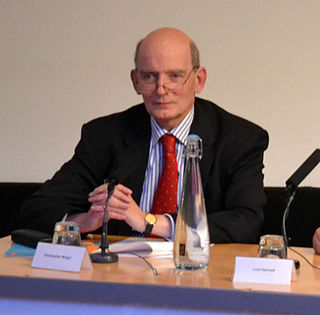
Christopher John Wright is a former Head of Manuscripts at the British Library and Fellow of both the Royal Historical Society and the Society of Antiquaries of London. During his time at the library he oversaw several acquisitions, and in retirement became involved with the Friends of the British Library and the Reviewing Committee on the Export of Works of Art.
Mary Dorothy George (1878–1971), née Gordon, was a British historian best known for compiling the last seven volumes of the Catalogue of Political and Personal Satires Preserved in the Department of Prints and Drawings in the British Museum, the primary reference work for the study of British satirical prints of the eighteenth and nineteenth centuries.

The British Library contains a wide range of fine and historic bookbindings; however, books in the Library are organised primarily by subject rather than by binding so the Library has produced a guide to enable researchers to identity bindings of interest. The collection includes the oldest intact Western bookbinding, the leather binding of the 7th century St Cuthbert Gospel.
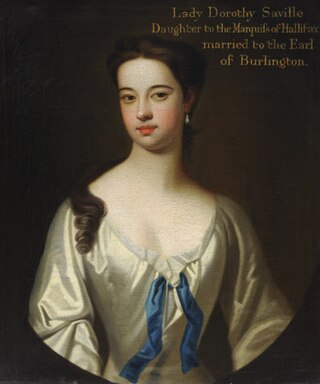
Dorothy Boyle, Countess of Burlington and Countess of Cork was a British noble and court official, as well as a caricaturist and portrait painter. Several of her studies and paintings were made of her daughters. Through her daughter Charlotte, who married the 4th Duke of Devonshire. A collection of 24 of her works of art descended to the Duke of Devonshire and kept at Chatsworth House.

Cary Coke was a book collector and patron of the British stage. She was the daughter of Sir John Newton of Barrs Court, a member of the House of Commons of England, and mother of Thomas Coke, the 1st Earl of Leicester.
Alexander Hyatt King, also known as Alec Hyatt King, was an English musicologist and bibliographer, who was a music librarian of the British Museum and leading scholar on Wolfgang Amadeus Mozart. Educated at Dulwich College and King's College, Cambridge, he began his career at the British Museum as a cataloguer in February 1934; a post he remained in until December 1944 when he succeeded William Charles Smith as Superintendent of the Music Room. He remained in that position until 1973 when he was named Music Librarian of the Reference Division at the British Library. He also concurrently served as the British Museum's Deputy Keeper of the Department of Printed Books from 1959 until his retirement in 1976. He was involved in the early days of the British Institute of Recorded Sound: as Chairman in 1952 he helped find accommodation for the collection within the British Museum.















